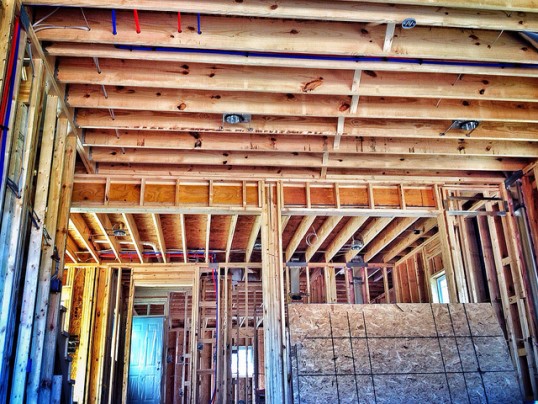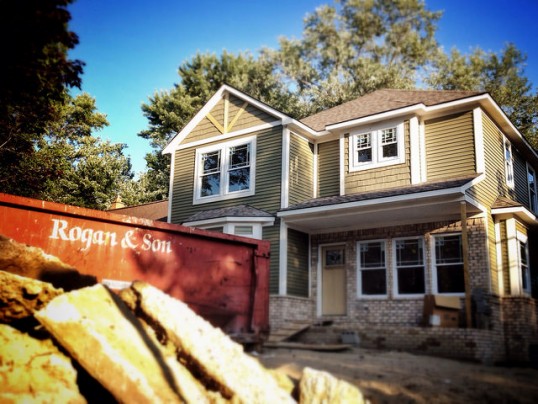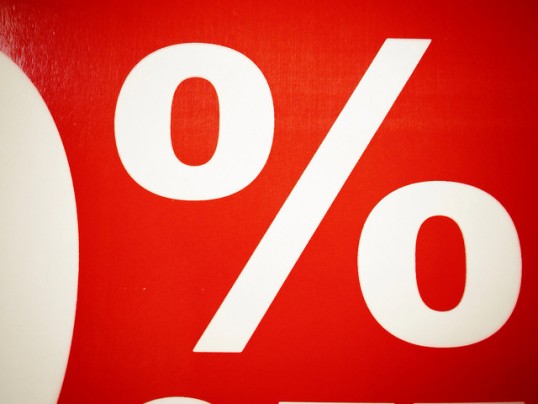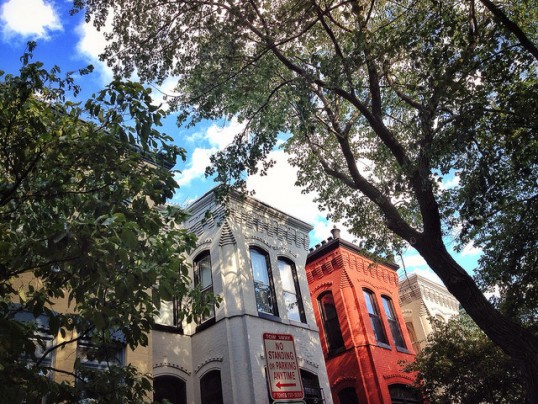Among today’s home buyers, nearly half would sacrifice location for desirable in-home features, according to a new survey from one of the nation’s largest homebuilders. The surprising survey results indicate that buyers are searching for move-in ready homes complete with key features and amenities and a significant number of them are willing to give up on proximity to entertainment and shopping and even better schools in order to get them. A representative for the homebuilder said today’s buyer isn’t just looking for the biggest home on the block. Instead, they are interested in efficient use of space and homes with feature-filled kitchens, bedrooms, and bathrooms. In fact, the kitchen was the most important room in the home when deciding to buy a new house. A large eat-in area was the highest ranked feature, though a kitchen island came in a close second. Master bedrooms with his-and-her closets were cited as important to 31 percent of participants, while a home with at least one bathtub was named by 54 percent of respondents. Regionally, screened-in porches were popular in the Southeast, while Northeastern buyers wanted rooftop terraces and accordion-style glass doors were popular in the Southwest. More here.
Archive for July 2014
Permits To Build New Homes On The Rise
Permits to build new single-family homes rose 2.6 percent In June, though overall permits were down 4.2 percent. The increase in authorizations to build new homes was a bright spot in an otherwise disappointing report. The estimates, released by the U.S. Census Bureau and the Department of Housing and Urban Development, showed housing starts down 9.3 percent overall, with a significant drop in the South. Housing starts – which measure the number of new homes that began construction during the month – were up in the West, Northeast, and Midwest. Economists could not explain why starts dropped so dramatically in the South, though they believe they will rebound in July. The rising number of building permits for single-family homes, on the other hand, is one of several recent improvements, including increasing builder confidence and new home sales, that indicate future gains in residential construction and the market for new homes. More here.
Builders Confident In Market For New Homes
The National Association of Home Builders Housing Market Index measures builders’ perceptions of the market for newly built single-family homes on a scale where any number above 50 indicates that more builders view conditions as good than poor. In July, the index increased four points to a reading of 53. It was the first time since January confidence has been above 50. David Crowe, NAHB’s chief economist, said an improving job market goes hand-in-hand with a rise in builder confidence. According to Crowe, as employment increases and those with jobs feel more secure about their economic situation, they are more likely to feel comfortable buying a home. July’s results also show increases to all three of the index’s individual components, including a six-point spike in expectations for future sales. Regionally, the West increased five points and the South was up two points from the month before. The Midwest rose a point to 35 and the Northeast climbed two points to 48. More here.
Mortgage Rates Up Slightly, Demand Slows
According to the Mortgage Bankers Association’s Weekly Applications Survey, average mortgage rates rose slightly last week across all loan categories, including 30-year fixed rate loans with both conforming and jumbo balances, 15 year fixed-rate loans, and mortgages backed by the Federal Housing Administration. But despite rates remaining low and relatively flat from the week before, mortgage application demand fell 3.6 percent. The drop in demand was largely due to an 8 percent decline in the seasonally adjusted Purchase Index, which is a future-indicator of home sales. And, though any significant decrease in purchase activity can be concerning, industry experts say the dip in application demand for loans to buy homes could have more to do with the July 4th holiday than it does with home sales trending downward. The MBA’s weekly survey has been conducted since 1990 and covers 75 percent of all retail residential mortgage applications. More here.
Is Today’s Market Best For Buyers Or Sellers?
Over the past few years, housing quickly shifted from a buyers’ bonanza to a sellers’ market due to rapidly rising home prices. Home values – which experienced double-digit drops during the financial crisis – rebounded significantly and made the market more attractive to homeowners who wanted to sell. But, as more owners put their homes up for sale, the increase in available inventory slowed price gains and, once again, tipped the scales toward prospective buyers. Now, according to a new survey of real-estate agents, the question of whether it’s a buyers’ or sellers’ market is a difficult one to answer. It typically takes awhile before the market can adjust to recent changes in prices and buyer demand. That means, though today’s potential home buyer may have confidence that they can hold out for a good deal because there are plenty of homes to choose from, today’s seller may also be confident and feel that they can get the price they want because recent increases in inventory have yet to affect asking prices. This disconnect should be temporary, however, as sellers adjust their asking prices and the market continues to normalize after many years of volatility. More here.
Gov’t Report Finds Signs Of Summer Rebound
The U.S. Department of Housing and Urban Development and the U.S. Department of the Treasury release a Housing Scorecard each month collecting key market data and the results of the administration’s foreclosure prevention efforts. According to their most recent report, the housing market is showing signs of a summer rebound with many key indicators moving in a positive direction, including growing homeowner equity, surging sales of new and existing homes, and foreclosure starts continuing to trend downward. Katherine O’Regan, HUD’s assistant secretary for policy development and research, said the June Housing Scorecard shows that the residential real-estate market continues to make progress as we enter the summer months but, given the severity of the housing crisis, there is still work to be done. Still, there are increasing signs of a healthy recovery. Among the report’s highlights, new home sales rose by 18.6 percent in May and are now 16.9 percent above year-before levels. Existing home sales are also up, rising 4.9 percent in May. Foreclosure starts, on the other hand, have fallen to their lowest level since December 2005 and are now down 32 percent from one year ago. More here.
Home Price Gains Get Smaller, More Widespread
Home prices are increasing at a slower rate than before but they’re also rising in more metropolitan areas than at any time since the housing recovery began. In fact, according to Trulia’s most recent Price Monitor, home prices rose in 97 of 100 metros compared with last June. But, though the increases are more widespread than before, they aren’t as large as they were last year or even last quarter. Nationally, home values are up 8.1 percent year-over-year. In June 2013, home prices were up 9.5 percent from the year before. Quarterly results also show the rate of increase falling, with gains dropping from 3.1 percent to 2.6 percent in the most recent report. Smaller increases across more metropolitan areas indicate home prices are normalizing, as areas hit hard by the foreclosure crisis are leveling and increases are beginning to spread into new areas. As evidence, Western cities are no longer dominating the list of top 10 biggest price gains among metro areas. Cities in the South and Midwest now claim eight of the top ten spots, while Western metros – which were posting more than 20 percent year-over-year increases in 2013 – have now fallen from the list. More here .







